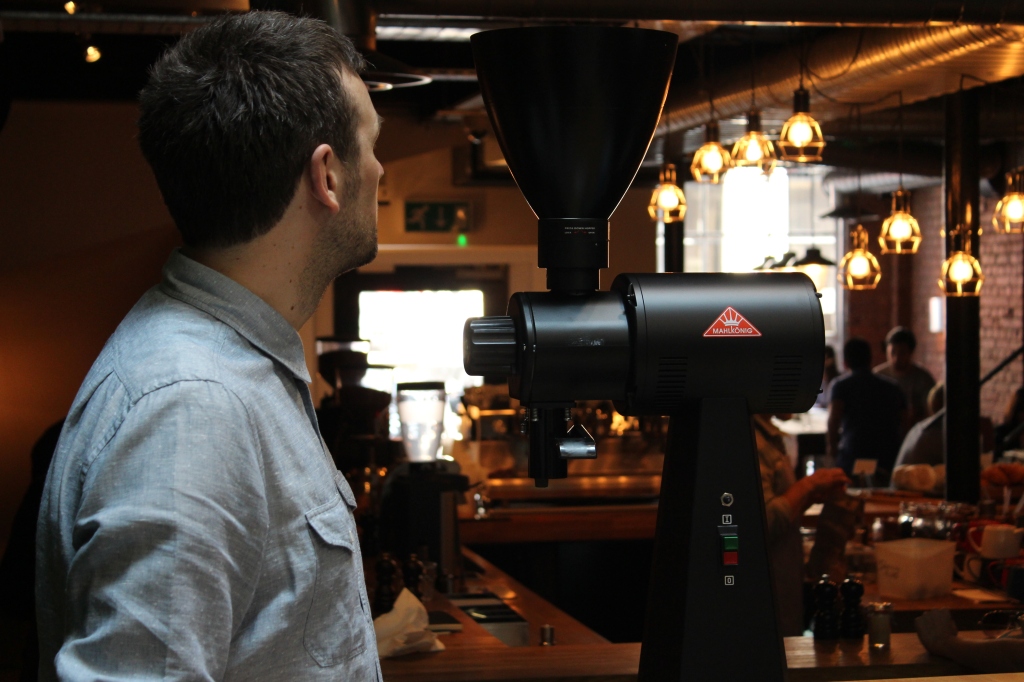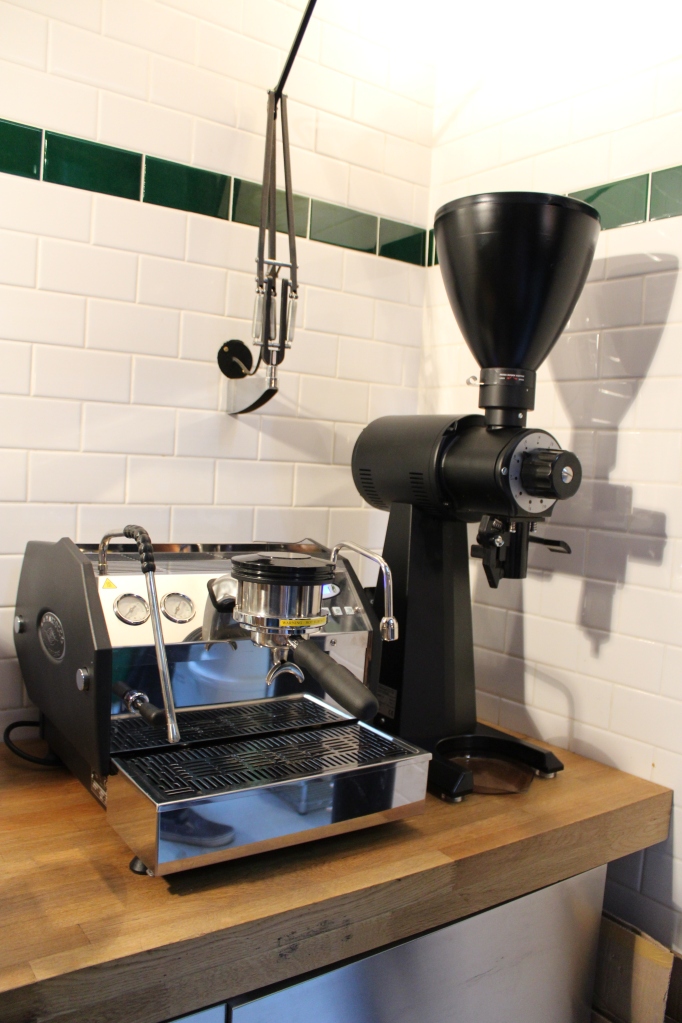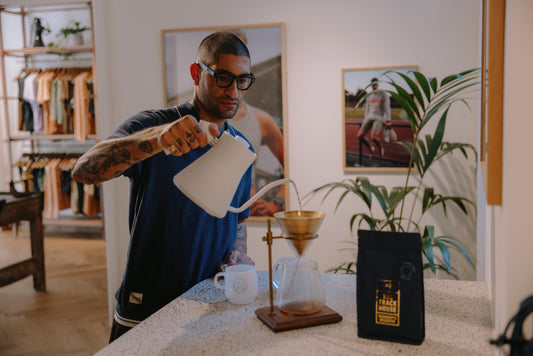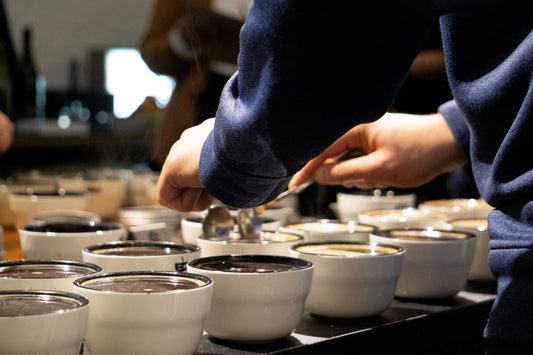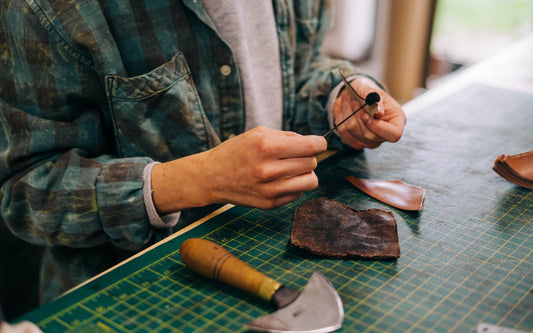Upon purchasing a Mahlkonig EK43 grinder for our production department in Clerkenwell, all our coffees that we cupped were displaying a greater level of clarity and definition. We began to develop a preference for those bowls with very high extraction yields, none of them showcasing the traits typically associated with over-extraction, even when we were drinking what the SCAA would call over-extracted. Instead, things just got sweeter and fuller. Three of us attended Ben Kaminsky’s recent Brewing Class hoping to better understand what the EK43 was doing differently.
Ben gave a lecture on his experiences with various grinders and their relative success and failure in producing a grind quality that enables optimal coffee extraction. There was plenty of opportunity to vent about the frustration over under-extraction in espresso brewing, and the inevitable trade-off between roast solubility, roast flavours and modern espresso brew formulas.
The most enlightening moment was when Ben presented his data on grind size distribution and the contribution of various grind sizes to the overall extraction level, and the resulting flavour. If a grinder creates a wide spread of different grind sizes then your brewed coffee with inevitably exhibit both over-extracted and under-extracted flavour traits. Also, due to the unavoidable presence of fines, which extract very readily, we are not actually extracting as much from the main portion (what Ben dubs the ‘fillet’) of grounds. An unintended consequence could be to end up roasting darker to alleviate the negative flavours caused by under-extracting the main portion of grounds.
The solution: optimally extract your coffee!
We underwent a calibration cupping of several coffees, including our own Gichathaini, Kenya and Olke Bire, Ethiopia that Ben had requested we bring. Every bowl was ground using the EK43 and extracted to 21%. Dictating an extraction yield to aim for avoids simply masking roasty flavours by under-extracting your cupping bowls and provides a more objective representation of the coffee’s flavour profile. Tasting your own coffees in another environment, and through different equipment and water, is always informative, and those that we brought along were positively singing.
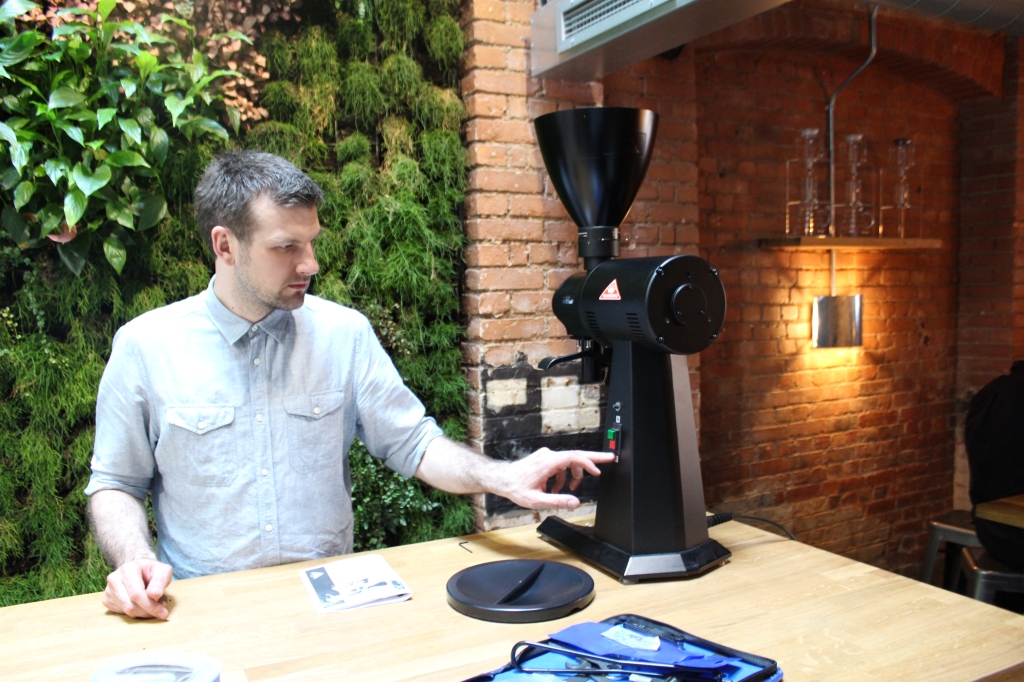
One way to mitigate the muddled character caused by a vastly uneven grind distribution is to sieve your coffee grounds, removing the large bits with a 1000 micron sieve and the small bits with a 250 micron sieve. The more even grounds can be extracted to an optimal level without the fines over-extracting and the boulders under-extracting. This may be a tenable option in barista competitions, but is unfeasible for a busy coffee bar. The EK43 produces a unimodal grind size distribution with a small standard deviation, eliminating the need for sieving.
The excellent grind quality of the EK43 can facilitate superior brewing of both filter strength and espresso strength coffees. Ben claimed that all brewers are imperfect, but favours the espresso machine for producing both styles of coffee. It delivers water at a controllable, consistent temperature, adjustable pressure, it showers the bed of coffee evenly and the portafilter is a great flat bed brewer. Due to a lack of fines from the EK43, your flow rate relates more closely to the dial on your grinder, making it easy to extract more solubles by grinding finer and exposing more surface area to your solvent. There are no fines to impede the flow and so espresso brewing follows the rules of filter brewing more closely.
Despite struggling with the softness of the water, Ben pulled us some filter strength “Coffee Shots” through the espresso machine with incredibly high extraction yields (well into the redzone of above 22%) that possessed real sweetness and very strong aromatics. Our Olke Bire, Ethiopia tasted so clean and floral and the Gichathaini, Kenya developed a fantastic, syrupy sweetness at the high extraction levels. Even more impressive were the espressos made with our Cult of Done Espresso (Thunguri AB), brewed using a recipe of 21g coffee to 52g water (instead of 18g:33g). We enjoyed some espressos with the most voluptuous texture and a ridiculous fudgey sweetness, with extraction yields of around 21%. All that is required is extra preparation time (weighing out a whole lot of doses) and the EK43 can be your new espresso grinder, enabling higher extraction yields and super tasty coffee.
We continued tasting well into the night and left itching to get back to our place and experiment on home turf. A La Marzocco GS3 now neighbours the EK43 in our Production Department, and we are continuing to experiment - looking at whether or not we'll work the EK43 into regular bar service.
-- If you're interested in the Mahlkonig EK43 for your place, don't hesitate to get in touch for more information, pricing and delivery times.
Share:


